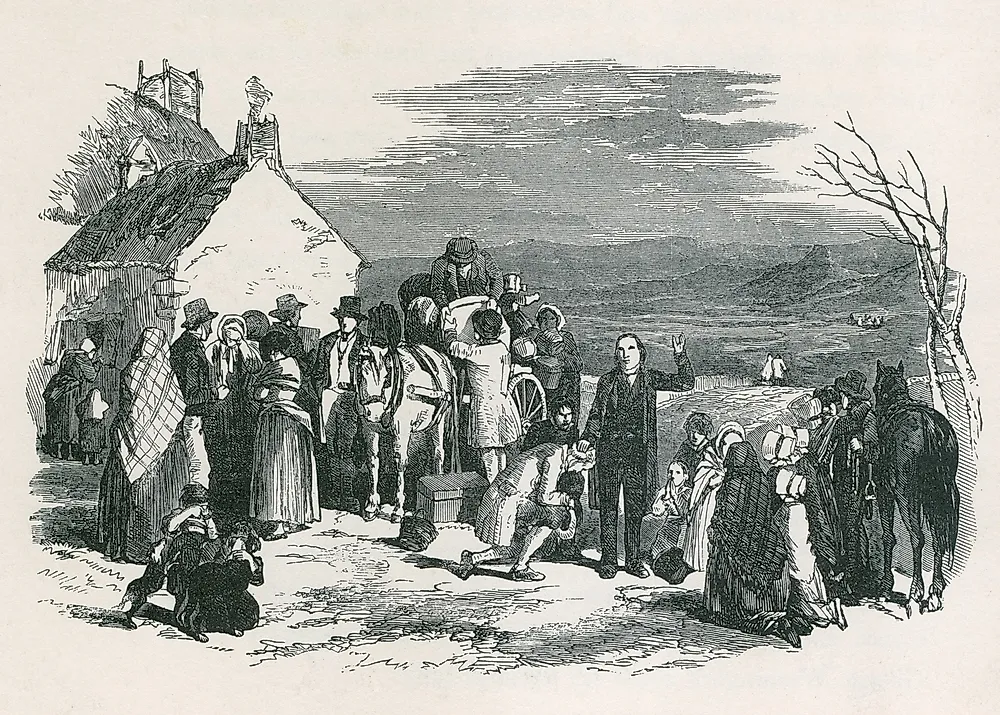Irish immigrants feeling the potato famine in the 1840s brought their halloween traditions to the united states which began the popularization of the holiday

Irish Immigrants and the Popularization of Halloween in the United States

The Irish potato famine in the 1840s was a period of great suffering for the Irish people. The failure of the potato crop, the staple food of Ireland, led to a devastating famine that resulted in widespread starvation, disease, and mass emigration. During this time, many Irish immigrants fled to the United States in search of a better life. Along with them, they brought their rich Halloween traditions, which would later play a significant role in popularizing the holiday in America.
The Irish immigrants who arrived in the United States during this period faced many challenges. They were often discriminated against and faced hardships in their new country. However, they clung onto their cultural traditions, including the celebration of Halloween or Samhain, as it was known in Ireland.
Samhain was a Gaelic festival celebrated on the eve of October 31st, marking the end of the harvest season and the beginning of winter. It was believed to be a time when the boundary between the living and the dead was blurred, and spirits roamed freely on Earth. Bonfires were lit, and people wore costumes to ward off evil spirits.

As the Irish immigrants settled in the United States, they continued to observe their Halloween traditions, passing them down through the generations. These traditions slowly started to merge with other cultural customs and evolved into the Halloween we know today.
The Irish immigrants’ Halloween traditions began to gain popularity in America, especially in cities with large Irish communities, such as Boston and New York. Over time, Halloween became more commercialized and embraced by a broader population. The traditions of dressing up in costumes, carving pumpkins, and going trick-or-treating became staples of the holiday.
Today, Halloween is one of the most widely celebrated holidays in the United States, filled with costumes, decorations, and festivities. Its roots can be traced back to the Irish immigrants who brought their Halloween traditions with them as they escaped the devastating effects of the potato famine.
In conclusion, the Irish immigrants who experienced the horrors of the potato famine in the 1840s played a significant role in popularizing Halloween in the United States. Their traditions, brought from Ireland, merged with other cultural customs and evolved into the widely celebrated holiday we know today. The influence of these immigrants has left a lasting legacy on American culture, ensuring that Halloween continues to be a cherished and beloved occasion for generations to come.
Source: The Irish Post
Related Posts
Quick Links
Legal Stuff

